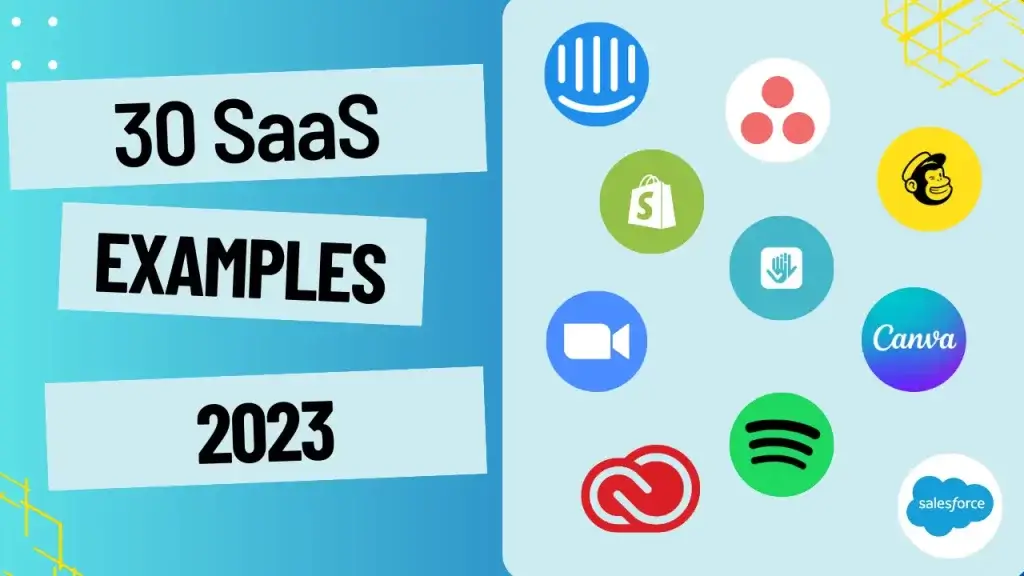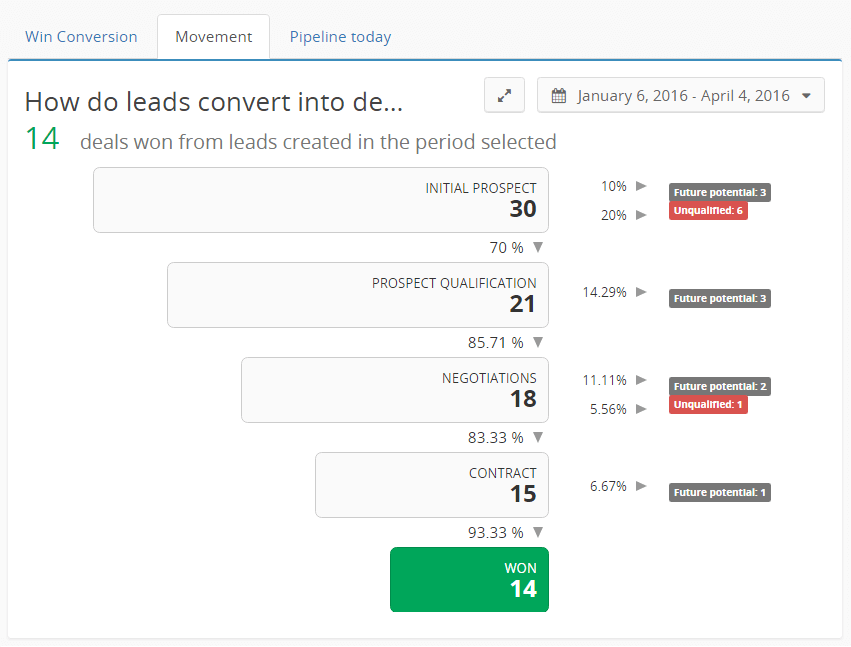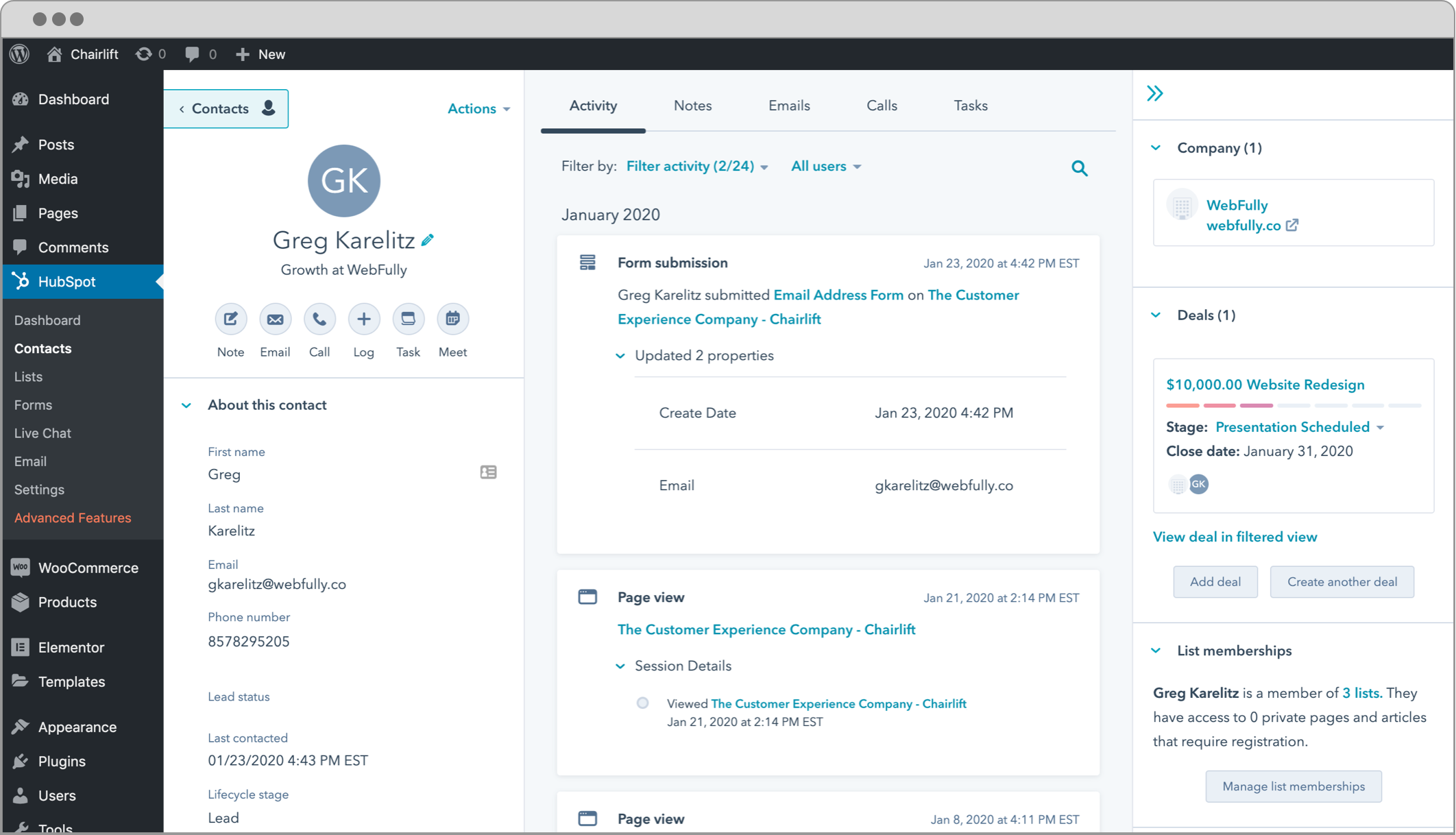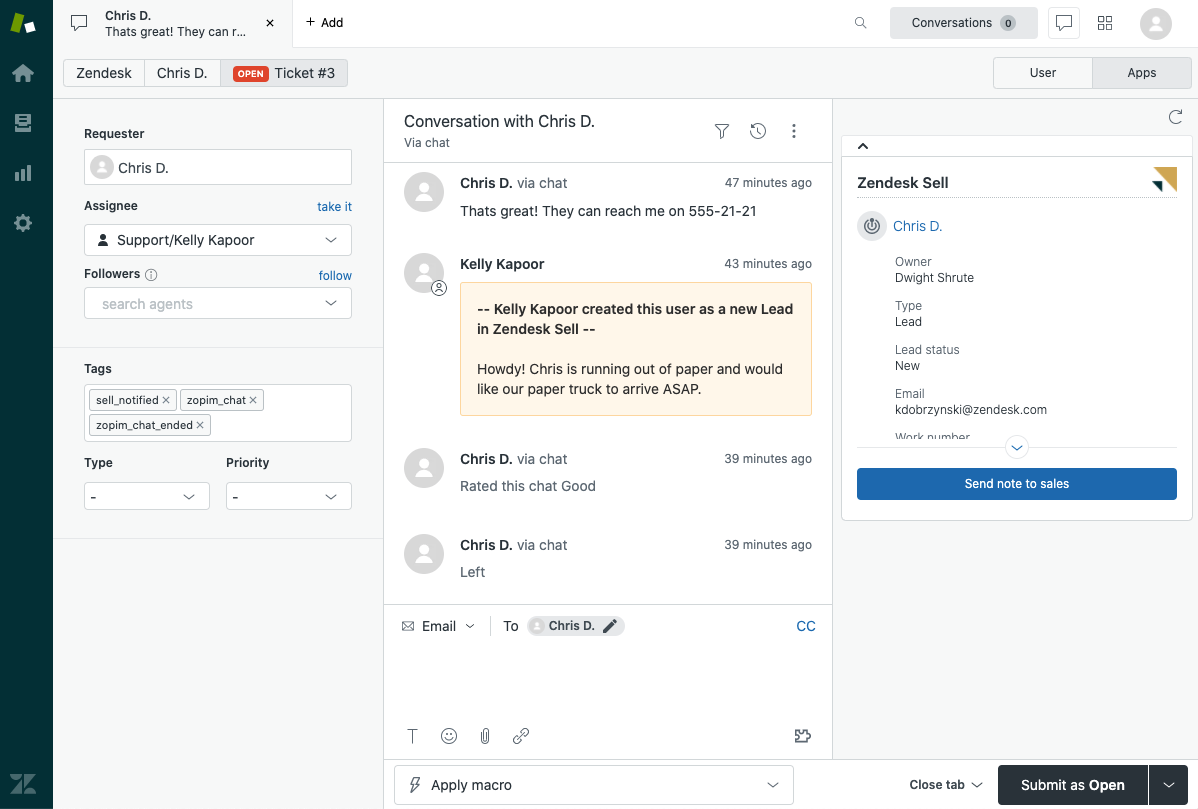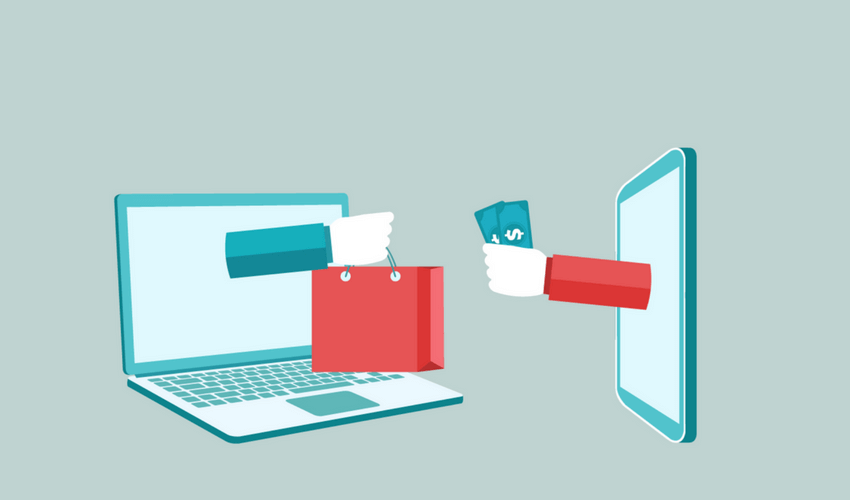In this comprehensive exploration of SaaS platforms, we delve into the diverse array of solutions that are shaping the future of business and personal productivity. From industry giants like Salesforce and Adobe Creative Cloud to innovative tools like Airtable and Monday.com, we unveil how each platform contributes to the evolving digital landscape, catering to specific needs like customer relationship management, team collaboration, and creative endeavors.
Key Takeaways:
- SaaS Defined: Understand the essence of Software as a Service (SaaS) and how its cloud-based model offers advantages over traditional software.
- Customization and Integration: Discover the extent to which SaaS solutions can be tailored and integrated with existing business systems to enhance functionality.
- Security and Compliance: Learn about the stringent security measures and compliance protocols SaaS providers implement to protect user data.
- Collaboration and Accessibility: Recognize the power of SaaS platforms to facilitate seamless collaboration and provide access from anywhere, fostering remote work and real-time communication.
- Industry-Specific Solutions: Explore the availability of specialized SaaS platforms designed to meet the unique challenges and requirements of various industries.
Table of Contents
- Salesforce
- Zoom
- Teamgate CRM
- Shopify
- Dropbox
- HubSpot
- Slack
- Asana
- DocuSign
- Trello
- MailChimp
- FreshBooks
- Wix
- Zendesk
- Squarespace
- Atlassian JIRA
- QuickBooks Online
- Zoho
- Microsoft 365
- Google Workspace
- Adobe Creative Cloud
- Twilio
- Intercom
- Canva
- Airtable
- Monday.com
- Klaviyo
- Spotify
- Tableau
- Ceridian Dayforce
30 SaaS Examples for 2023
Introduction
In the digital era, Software as a Service (SaaS) is not just a buzzword; it’s a pivotal element of modern business strategy. SaaS platforms have revolutionized the way companies operate, offering sophisticated tools that are accessible over the internet. These services provide flexibility, scalability, and cost-effectiveness, allowing businesses to leverage cutting-edge technology without significant upfront investment in hardware or software.
This comprehensive guide delves into the world of SaaS, showcasing a curated list of exemplary services that have altered the landscape of their respective industries. From customer relationship management (CRM) to project coordination, and from creative design to financial management, the versatility of SaaS solutions is boundless. As we explore these trailblazers, you’ll gain insights into their core features, their transformative impact, and how they can be harnessed to propel your business forward in an increasingly competitive market.
Salesforce
What is Salesforce?
Salesforce stands at the pinnacle of SaaS success, a beacon for what cloud-based CRM can achieve. It’s not merely a tool; it’s a comprehensive ecosystem that has redefined customer relationships for businesses across the globe. In the pursuit of sales excellence, Salesforce is your steadfast ally, empowering you to connect with customers, streamline processes, and make data-driven decisions.
Salesforce Benefits
With Salesforce, every customer interaction becomes an opportunity to create value. It captures a wealth of customer data, translating it into actionable insights through its sophisticated analytics. Sales teams can track leads, monitor sales pipelines, and automate routine tasks, all in real time, which enhances efficiency and frees them to focus on what truly matters—building lasting relationships.
What Sets Salesforce Apart?
Industry use-cases of Salesforce are as diverse as they are impressive. Whether it’s a small startup looking to establish a foothold or a multinational corporation managing complex sales cycles, Salesforce’s adaptability makes it an indispensable asset. It’s the Swiss Army knife of CRM, equipped with everything you need to carve a path to success in the sales world.
Zoom
What is Zoom?
Zoom emerged as the quintessential example of SaaS agility, transforming from a mere video conferencing tool into an indispensable fixture in corporate and educational communication. Its sleek, intuitive interface belies the powerful technology beneath—a technology that has kept the world connected when physical proximity became a luxury.
Zoom Benefits
The impact of Zoom extends far beyond the conference room. It has enabled remote workforces to flourish, bridging the gap between geographical distances and fostering a new era of collaboration. With features such as screen sharing, webinar hosting, and real-time messaging, Zoom has made its mark as a comprehensive communication suite.
What Sets Zoom Apart?
Business operations have been reimagined through Zoom’s lens, breaking down traditional barriers to efficient workflow management. Training sessions, global meetings, and even virtual social gatherings are conducted with seamless precision, illustrating Zoom’s versatility. In a world where adaptability is key, Zoom has not just adapted; it has led the charge in redefining professional communication.
Teamgate CRM
What is Teamgate?
Teamgate CRM strides into the SaaS realm with a focus on simplicity and clarity, designed to streamline the labyrinth of sales management into a navigable path. It’s a CRM that understands the nuances of the sales process, built to enhance the acumen of sales teams with a blend of intelligence and intuition.
Teamgate Benefits
At its core, Teamgate is a catalyst for sales growth, providing a full-stack sales platform that nurtures leads from the first contact to the final handshake. Its interface is a testament to user-centric design, ensuring that every feature, from lead scoring to sales pipeline visualization, is but a few clicks away. Teamgate’s integrated analytics serve not only as a rearview mirror, reflecting past performance but also as a compass, guiding future strategy with predictive insights.
What Sets Teamgate Apart?
Sales teams find in Teamgate a partner that speaks their language. It offers a scalable solution that aligns with the dynamic nature of sales cycles, adaptable to the ebbs and flows of customer engagement. For businesses seeking a CRM that merges functionality and affordability with user experience and dedicated customer support, Teamgate stands as a compelling candidate, one that not only promises enhanced sales management but also delivers it with precision.
Shopify
What is Shopify?
In the bustling marketplace of e-commerce, Shopify shines as a beacon of innovation, providing a lifeline to retailers in the digital ocean. It is the cornerstone upon which many merchants have built their online stores, a platform that combines ease of use with robust functionality. Shopify has democratized e-commerce, allowing anyone from budding entrepreneurs to established brands to carve out their niche in the online retail space.
Shopify Benefits
What sets Shopify apart is its user-friendly interface, paired with powerful tools designed to optimize sales and manage products. It’s a harbor in the complexity of e-commerce, where one can manage inventory, analyze sales trends, and craft a customer experience that resonates. The platform’s flexibility enables businesses to create a storefront that reflects their brand, with customizable templates and themes.
What Sets Shopify Apart?
Moreover, Shopify is not just a static platform; it’s a dynamic ecosystem that grows with your business. It’s scalable, supporting small businesses as they expand their digital footprint, and robust enough to serve large enterprises with high-volume transactions. Shopify’s integration with various payment gateways, SEO tools, and marketing platforms makes it a comprehensive solution for anyone looking to thrive in the e-commerce arena. If you’re looking to set up your Shopify store, there are professional services that can help you get started seamlessly and effectively.
Dropbox
What is Dropbox?
Dropbox, a pioneer in cloud storage, stands as a testament to the transformative power of SaaS. It has replaced the clunky external drives and the labyrinthine file servers with a sleek, cloud-based solution that can be accessed from anywhere, at any time. Dropbox is more than just storage; it’s a collaborative workspace where ideas are born and brought to fruition.
Dropbox Benefits
Collaboration is the heart of Dropbox. It has transcended the traditional boundaries of file sharing, enabling teams to work together seamlessly, whether they are separated by a wall or an ocean. Real-time syncing ensures that the latest version of a document is always at hand, while version history provides a safety net for every change made.
What Sets Dropbox Apart?
The beauty of Dropbox lies in its simplicity. It integrates into the workflow with such ease that it becomes an extension of the work itself. It’s a silent partner in projects, a custodian of creativity that safeguards data without stifling the creative process. For businesses and individuals alike, Dropbox has redefined what it means to work together, proving that the best tools are those that are so intuitive, they become nearly invisible.
HubSpot
What is Hubspot?
HubSpot is the conductor of the digital marketing orchestra, a SaaS platform that brings harmony to the cacophony of online marketing tools. It’s an all-in-one suite that allows businesses to attract visitors, convert leads, and close customers. In the realm of inbound marketing, HubSpot is not just a participant; it is a leader, a visionary that has crafted a new paradigm for customer engagement.
Hubspot Benefits
The suite’s prowess lies in its integration capabilities—combining CRM, email marketing, social media management, and content management into a cohesive whole. HubSpot is a central hub that aligns sales, marketing, and customer service teams, providing a 360-degree view of the customer journey. This alignment is not just convenient; it’s critical in delivering a consistent and personalized customer experience.
What Sets Hubspot Apart?
HubSpot’s analytical tools are the compass by which businesses can navigate the complex seas of digital marketing. It doesn’t just collect data; it illuminates paths, showing which marketing efforts are resonating and which need fine-tuning. For those seeking to understand and capitalize on the nuances of customer interactions, HubSpot offers clarity and direction, ensuring that every marketing effort is an informed one.
Slack
What is Slack?
Slack has reimagined the workplace conversation, transforming it from a tangle of emails into a streamlined flow of productivity. As a SaaS platform, Slack is the epitome of efficient workplace communication, offering a centralized space for teams to collaborate, share ideas, and push projects forward. It’s more than a messaging app; it’s a communal workspace that transcends geographical boundaries.
Slack Benefits
The magic of Slack lies in its channels—dedicated spaces for every topic, project, or team. These channels ensure that conversations are organized and that the right people are included without the noise of an all-staff inbox. Integration with numerous productivity tools means that Slack doesn’t just centralize communication; it becomes the operational nexus of the workday.
What Sets Slack Apart?
Adopting Slack is akin to adopting a new work culture, one that favors openness, speed, and agility. Its impact on project management is profound, providing visibility into the progress and hurdles in real-time, thereby enabling quicker pivots and decision-making. For businesses looking to foster a culture of transparency and collaboration, Slack is the digital cornerstone of the modern, interconnected workplace.
Freshworks
What is Freshworks:
Freshworks is a global software company that provides a suite of cloud-based customer engagement tools, primarily designed for businesses to improve their customer service, sales, and marketing efforts. The platform includes a variety of software solutions for customer support, help desk management, CRM (Customer Relationship Management), IT service management, and more.
World of Top FAQ Software
Freshworks offers a robust solution for managing customer queries with its powerful top FAQ software, serving as a central hub for creating, organizing, and distributing knowledge. Designed to streamline support and reduce response times, it allows businesses to build self-service portals that empower customers to find answers quickly, reducing the need for direct interactions and boosting overall efficiency.
DocuSign
What is DocuSign?
In an age where every second counts, DocuSign has emerged as the harbinger of efficiency, bringing the time-consuming process of signing documents into the digital age. As a SaaS platform, DocuSign is synonymous with the ease and security of e-signatures, streamlining agreements for businesses and customers alike.
DocuSign Benefits
DocuSign’s digital signature service does more than mimic an ink signature; it enhances the agreement process with layers of security and verification that paper documents can’t match. The platform maintains an audit trail for each document, ensuring compliance and providing peace of mind for even the most sensitive of agreements.
What sets DocuSign Apart?
What truly sets DocuSign apart is its universal applicability. From real estate contracts to HR paperwork, DocuSign facilitates a seamless transition from paper to digital, cutting down the turnaround time for approvals from days to minutes. It’s a testament to how SaaS platforms can not only improve business operations but also fundamentally alter them for the better.
Trello
What is Trello?
Trello stands as a testament to the power of visual organization in managing projects and tasks. As a flexible SaaS tool, Trello transforms the concept of the to-do list into an interactive board, where workflow and task management are as intuitive as moving a card from one column to the next. It’s an embodiment of the Kanban methodology, adapted for the digital age.
Trello Benefits
The strength of Trello lies in its simplicity and the tactile satisfaction of moving cards to signify progress. It’s a platform that can be as straightforward or as detailed as the project demands, with customizations that can cater to the specific needs of any team or project. Teams can see at a glance what needs to be done, who’s responsible for what, and where things stand in the project timeline.
What sets Trello Apart?
Trello fosters a sense of accomplishment and momentum. With features like checklists, due dates, and labels, it’s a dynamic tool that keeps teams engaged and informed. For organizations that thrive on visual cues and real-time updates, Trello is the digital workspace that brings teams together around a shared vision of progress and completion.
MailChimp
What is Mailchimp?
MailChimp is the digital marketer’s right hand, an all-encompassing SaaS platform that turns email marketing into a fine art. It goes beyond sending emails; it’s about building relationships, analyzing engagement, and personalizing communication to resonate with each recipient. MailChimp is a bridge between businesses and their audiences, delivering messages that matter.
Mailchimp Benefits
What sets MailChimp apart is its user-friendly design paired with powerful marketing automation tools and CRM integrations. It allows for the creation of beautifully crafted emails without needing a background in graphic design. Its segmentation capabilities ensure that campaigns are targeted, increasing relevance and engagement. Moreover, the analytics MailChimp provides are not merely numbers—they are insights that shape future strategies.
What sets Mailchimp Apart?
MailChimp serves as a launchpad for small businesses and a powerful engine for large enterprises. Whether it’s managing a newsletter, launching a product, or nurturing leads, MailChimp provides the tools to reach the right people with the right message at the right time. It’s not just about sending emails—it’s about starting conversations.
FreshBooks
What is FreshBooks?
In the complex world of business finance, FreshBooks emerges as a beacon of clarity. This SaaS platform takes the dread out of accounting with its user-friendly interface and comprehensive set of tools designed for small businesses and freelancers. FreshBooks makes it possible to send invoices, track time, manage receipts, and stay on top of business finances without being an accounting expert.
FreshBooks Benefits
FreshBooks excels in simplifying the invoicing process. Creating professional-looking invoices, automating billing, and receiving payments become tasks that require just a few clicks. The platform’s time-tracking capabilities ensure that every billable hour is accounted for, while its expense tracking helps maintain a clear picture of financial health.
What sets FreshBooks Apart?
For entrepreneurs who wear multiple hats, FreshBooks is the financial manager that provides peace of mind. It offers the insights needed to make informed decisions about the business’s future, translating numbers into narratives. With FreshBooks, the financial side of running a business becomes less about stress and more about strategy.
Wix
What is Wix?
Wix is the artist of the website creation world, a SaaS platform that brings the craft of design into the hands of the many. With its powerful yet user-friendly features, Wix strips away the complexities of web development, enabling entrepreneurs, creatives, and business owners to construct their digital presence with grace and ease. It’s a canvas for the modern web, where the barriers to creating beautiful, functional websites are all but erased.
Wix Benefits
The allure of Wix lies in its drag-and-drop interface, granting the freedom to design without the need for coding expertise. Templates galore offer a starting point for various industries, while the depth of customization allows each site to have its unique flair. It’s not just about building a website; it’s about crafting a digital identity that’s in perfect alignment with one’s brand vision.
What sets Wix Apart?
Beyond aesthetics, Wix is a robust platform equipped with SEO tools, e-commerce capabilities, and responsive design for mobile devices. It empowers businesses to not only launch their websites but to thrive online. For those seeking to make a mark on the internet, Wix offers the tools to carve out a virtual space that is distinctly and memorably their own.
Zendesk
What is Zendesk?
In the realm of customer service, Zendesk stands as a paragon of customer relations management. This SaaS platform is designed to build better relationships between companies and their customers by offering seamless support channels and a wealth of customer insights. It’s the bridge between customer queries and company responses, ensuring that no customer feels unheard or underserved.
Zendesk Benefits
Zendesk streamlines customer interactions across multiple channels into one accessible dashboard, ensuring that whether a customer reaches out via email, chat, or social media, their voice is centralized and addressed. It’s an approach that recognizes the multifaceted nature of modern communication and respects the customer’s choice of medium.
What sets Zendesk Apart?
The platform’s true power, however, lies in its analytics and reporting features, which transform raw data into a deeper understanding of customer needs and behaviors. This knowledge allows businesses to tailor their service strategies, drive further insights into your CRM, and continuously improve the customer experience. For any business that believes customer service is the cornerstone of success, Zendesk offers the tools to build a strong foundation.
Squarespace
What is Squarespace?
Squarespace takes the essence of creativity and molds it into a suite of tools that enables anyone to build an online presence that is both elegant and powerful. As a SaaS platform, Squarespace is synonymous with design excellence, offering a suite of website building and hosting services that empower individuals and businesses to create stunning websites that captivate visitors.
Squarespace Benefits
At the heart of Squarespace is a philosophy that good design is for everyone. It achieves this with a plethora of design templates that serve as the starting blocks for creating a web presence. But Squarespace is more than just good looks; it’s a comprehensive platform with built-in SEO tools, e-commerce functionalities, and detailed analytics.
What sets Squarespace Apart?
Squarespace’s intuitiveness extends to its e-commerce solutions, which provide a streamlined, secure shopping experience for customers. The platform is not just about building websites; it’s about creating a cohesive brand experience from homepage to checkout. For businesses and individuals who aspire to make a statement on the web, Squarespace offers a blend of aesthetics and functionality that stands out in the vastness of the internet.
Atlassian JIRA
What is Atlassian JIRA?
Project management in the realm of software development demands precision, adaptability, and clarity. Atlassian JIRA, a powerhouse in the SaaS sphere, rises to this challenge, offering a project tracking tool that’s become synonymous with agile and scrum methodologies. It’s the compass that guides software teams through the complexities of their work, from backlog grooming to sprint reviews.
Atlassian JIRA Benefits
JIRA’s prowess is its ability to morph to the contours of any development process. It facilitates the creation of user stories, issue tracking, and task assignments, ensuring that every team member is synchronized with the project’s heartbeat. Its agile boards provide a visual snapshot of progress, while custom workflows reflect the unique processes of each team.
What sets Atlassian JIRA Apart?
Beyond its agile framework, JIRA integrates with a suite of tools to form the backbone of the developer’s workflow, including code repository management, continuous integration, and deployment pipelines. For development teams aiming to elevate their productivity and product quality, JIRA offers not just a tool but a transformation in how projects are managed and executed.
QuickBooks Online
What is Quickbooks?
In the financial tapestry of small to medium-sized businesses, QuickBooks Online threads itself as an essential SaaS solution, simplifying accounting tasks with precision and accessibility. It’s the financial nerve center for countless businesses, providing real-time insights into cash flow, invoice management, and expense tracking.
Quickbooks Benefits
QuickBooks Online’s edge is its intuitive interface, which makes complex accounting tasks manageable for non-accountants. Its seamless automation of day-to-day accounting tasks—like categorizing expenses and reconciling bank statements—frees up valuable time for business owners to focus on growth. Additionally, the platform’s robust reporting capabilities allow for a quick understanding of a business’s financial health. Additionally, Quickbooks Online has the capability to integrate into your CRM creating seamless two-way deal management and invoicing.
What sets Quickbooks Apart?
For those venturing into the world of entrepreneurship or those steering the finances of an established business, QuickBooks Online is a vigilant ally. It offers a comprehensive, cloud-based accounting solution that adapts to the ebb and flow of business dynamics, ensuring that financial management is a strength, not a stressor.
Zoho
What is Zoho?
In the crowded landscape of business productivity tools, Zoho stands out as a comprehensive suite of over 40 applications designed to bolster business operations. It’s a versatile SaaS ecosystem that caters to various facets of business management, from sales and marketing to email and collaboration.
Zoho Benefits
Zoho’s suite is like a Swiss Army knife for businesses, offering tools for CRM, project management, invoicing, and much more—all designed to work together seamlessly. The connectivity between apps facilitates a smooth data flow, enhancing efficiency and reducing the need for disparate software solutions.
What sets Zoho Apart?
What sets Zoho apart is its commitment to customization and scalability, ensuring that businesses of all sizes can tailor the tools to their specific needs. Whether streamlining communication with Zoho Mail, managing customer relationships with Zoho CRM, or analyzing data with Zoho Analytics, the platform is a one-stop-shop for businesses seeking to streamline their operations and drive growth through smarter workflows and insights.
Microsoft 365
What is Microsoft 365?
In the digital tapestry of workplace productivity, Microsoft 365 emerges as a comprehensive suite of tools that blend tradition with innovation. This SaaS offering from the tech giant Microsoft has redefined collaboration and productivity, providing a plethora of applications that cater to every aspect of the modern workspace. From the stalwarts of Word and Excel to the collaborative hubs of Teams and SharePoint, Microsoft 365 is the productivity powerhouse for businesses worldwide.
Microsoft 365 Benefits
The brilliance of Microsoft 365 lies in its familiar interface coupled with cloud-based agility. It offers the tools millions have grown up with, now enhanced for the cloud era, enabling work from anywhere, on any device. This versatility extends to its collaboration features, where co-authoring documents and virtual meetings have become as straightforward as traditional work tasks.
What sets Microsoft 365 Apart?
Microsoft 365 is not just about individual productivity; it’s a collaborative ecosystem. Its integrated approach ensures that whether you’re planning a project, crunching data, or securing corporate communications, all your tools are interconnected and always up to date. For businesses seeking a seamless transition to a modern workplace, Microsoft 365 offers a bridge to the future, built on the foundations of the past.
Google Workspace
What is Google Workspace?
Google Workspace stands as a testament to Google’s vision of a collaborative, interconnected, and flexible work environment. This SaaS solution harnesses the power of Google’s search and cloud technology to provide a suite of tools that are simple yet powerful, accessible yet secure. From the real-time collaboration of Docs and Sheets to the communication capabilities of Gmail and Meet, Google Workspace is the embodiment of efficiency and synergy.
Google Workspace Benefits
The strength of Google Workspace lies in its simplicity and integration. Every tool is designed with the user in mind, ensuring that collaboration is not an added feature but a core aspect of every application. The seamless integration across all its tools fosters a work environment where the sharing of ideas and information is instantaneous and natural.
What sets Google Workspace Apart?
Google Workspace’s appeal extends beyond its tools to its infrastructure, which is built with security and privacy at its core. For businesses, this means peace of mind, knowing that their data is protected with robust security measures. For teams looking for a platform that supports dynamic collaboration within a secure environment, Google Workspace presents a compelling proposition.
Adobe Creative Cloud
What is Adobe Creative Cloud?
Adobe Creative Cloud is a luminary in the creative SaaS space, providing a suite of applications that are synonymous with digital creativity. From image editing with Photoshop to video production with Premiere Pro, Adobe Creative Cloud is an indispensable toolkit for creatives across disciplines. It’s a platform that has not only witnessed the evolution of digital design but has driven it.
Adobe Creative Cloud Benefits
The suite’s strength lies in its comprehensive set of professional tools that cater to designers, photographers, videographers, and artists of all kinds. Adobe Creative Cloud offers not just the tools but also the cloud storage and collaborative features that enable creatives to work together from anywhere in the world.
What sets Adobe Creative Cloud Apart?
Beyond its applications, Adobe Creative Cloud is also a hub for learning and inspiration. With a subscription, users gain access to a vast library of tutorials and assets that encourage continuous learning and creativity. For professionals and enthusiasts alike, Adobe Creative Cloud is more than a set of tools—it’s a community and a catalyst for creative expression.
Twilio
What is Twilio?
Twilio has redefined communication in the digital age, offering a cloud-based SaaS platform that equips businesses with the ability to engage with customers on a variety of channels. Whether it’s voice, text, chat, or video, Twilio provides the APIs that integrate communication capabilities directly into existing applications or services. It’s about meeting customers where they are and how they prefer to communicate.
Twilio Benefits
The power of Twilio lies in its flexibility and scalability. Developers can build custom communication solutions that scale with the growth of the business, ensuring that customer engagement remains consistent, personalized, and effective. With Twilio, businesses can create a seamless communication ecosystem that fosters a closer connection with their audience.
What sets Twilio Apart?
Twilio also emphasizes robust analytics and automation. By providing detailed insights into communication patterns and allowing for automated workflows, it enables smarter engagement strategies and more efficient operations. For businesses that want to innovate how they connect with customers, Twilio offers the building blocks to do so with precision and ease. Use cases include seamless integration of Twilio into your CRM for in-app dialling and call analytics.
Intercom
What is Intercom?
Intercom has carved out its niche in the SaaS landscape by reimagining how businesses interact with customers. It’s a platform that integrates various aspects of messaging to create a fluid and dynamic customer experience. From live chat to targeted emails, Intercom builds a bridge between the customer’s needs and the business’s response.
Intercom Benefits
The key to Intercom’s success is its conversational approach. It humanizes digital interactions by providing tools that feel personal and responsive. The platform’s use of AI-powered bots further enhances this by ensuring that customers receive instant attention, while complex issues are seamlessly escalated to human agents.
What sets Intercom Apart?
Intercom excels in creating a narrative of customer engagement that is coherent and continuous. By tracking customer interactions across the entire lifecycle, it enables businesses to deliver contextual and informed support. This approach not only improves the customer experience but also drives growth by building lasting relationships. Take Intercom one step further by integrating it into your CRM to benefit from centralized data across both sales and customer success.
Canva
What is Canva?
Canva has democratized design, making it accessible to professionals and novices alike. This SaaS platform provides an intuitive design suite filled with a vast array of templates and tools, allowing users to create everything from social media graphics to presentations. It embodies the intersection of simplicity and functionality in design.
Canva Benefits
The appeal of Canva is its straightforward user interface, which simplifies the design process without sacrificing quality or creativity. Users can drag and drop elements, experiment with color palettes, and select from thousands of fonts to bring their vision to life. With Canva, high-quality design is not the exclusive domain of trained designers.
What sets Canva Apart?
Canva also promotes collaboration, allowing teams to work together on projects in real-time, providing feedback, and sharing designs instantly. This collaborative spirit extends to its marketplace, where users can access a wealth of resources, including images, icons, and templates. For businesses and individuals who need to create professional-looking designs efficiently, Canva is a versatile and powerful ally.
Airtable
What is Airtable?
Airtable stands out in the SaaS industry as a hybrid platform that merges the simplicity of a spreadsheet with the complexity of a database. Its interface is familiar, yet beneath the surface lies a powerful tool for organizing projects, processes, and data. Airtable brings the power of database functionalities to those without extensive technical know-how, making it an accessible option for a wide range of business needs.
Airtable Benefits
The genius of Airtable is its versatility. It can act as a CRM, a project management tool, an inventory tracker, or whatever else businesses need to organize. Customizable views — including Grid, Calendar, Kanban, and Gallery — allow users to visualize their work in the way that suits them best. Integrated with a rich field type selection and linked records, Airtable goes beyond traditional spreadsheet capabilities.
What sets Airtable Apart?
With Airtable, collaboration is a breeze. Real-time updates mean that teams always have the most current information at their fingertips. For businesses looking for a flexible, user-friendly platform to handle their diverse data needs, Airtable provides a robust solution that scales with their operations.
Monday.com
What is Monday.com?
Monday.com has emerged as a vibrant and visual project management tool that promises to help teams stay on the same page. Its color-coded boards and customizable workflows bring clarity and fun to task management. As a work operating system (Work OS), Monday.com goes beyond project management, offering a platform for work processes of all kinds.
Monday.com Benefits
The platform’s strength is in its customization capabilities, which allow teams to create workflows that mirror how they work in real life. With a variety of templates and a drag-and-drop interface, Monday.com is adaptable to any project or process, whether that’s tracking complex projects, managing customer onboarding, or even running marketing campaigns.
What sets Monday.com Apart?
Monday.com promotes transparency in teamwork. With clear visual cues and timelines, everyone knows what’s due when and who’s responsible. The platform also includes powerful automation that reduces the need for manual grunt work, freeing teams to focus on the tasks that require their unique human skills. For teams seeking a comprehensive and flexible tool to enhance their productivity, Monday.com offers a compelling and engaging solution.
Klaviyo
What is Klaviyo?
Klaviyo is revolutionizing the way e-commerce brands approach marketing, offering a SaaS platform that specializes in harnessing the power of data to create targeted and personalized marketing campaigns. This platform excels at email and SMS marketing, allowing brands to reach out to their customers with messages that are timely, relevant, and effective.
Klaviyo Benefits
What sets Klaviyo apart is its deep integration with e-commerce platforms like Magento and Shopify, which enables it to pull in rich customer data for segmentation and analysis. This data-driven approach allows businesses to craft marketing messages that speak directly to the customer’s interests and behaviors.
What sets Klaviyo Apart?
Klaviyo’s automation tools are a game-changer, enabling businesses to set up sophisticated sequences that trigger based on customer actions, ensuring that communication is always contextual. With Klaviyo, e-commerce businesses can expect not just to send emails, but to start conversations that lead to lasting relationships and, ultimately, to drive sales.
Spotify
What is Spotify?
Spotify stands as a cultural SaaS icon in the music and audio streaming industry. Its platform has reshaped how we discover, share, and enjoy music. With an expansive library spanning countless genres, artists, and podcasts, Spotify offers a personalized listening experience powered by sophisticated algorithms that learn and adapt to user preferences.
Spotify Benefits
The platform’s success is grounded in its user-centric approach. Features like Discover Weekly and Spotify Radio are tailored to individual tastes, making music discovery effortless and engaging. Spotify also serves as a social medium where users can share playlists and see what friends are listening to, fostering a sense of community.
What sets Spotify Apart?
For artists and record labels, Spotify provides valuable data insights and marketing tools that aid in reaching audiences effectively. Its analytics help understand listener demographics and behavior, crucial for developing promotional strategies. Spotify isn’t just a streaming service; it’s a nexus where fans, artists, and the industry converge.
Tableau
What is Tableau?
Tableau has carved out a name for itself as a leading SaaS analytics platform, empowering businesses to make data-driven decisions. Its intuitive interface and powerful data visualization tools allow users to create interactive and shareable dashboards, making complex data analysis accessible to professionals at all levels.
Tableau Benefits
The strength of Tableau lies in its ability to connect with almost any database or data format, pulling in vast amounts of data for visualization. Users can drill down into analytics with ease, uncovering trends and insights that would remain hidden in spreadsheets. Tableau’s dashboards are a canvas for storytelling with data, presenting insights that can drive strategic business decisions.
What sets Tableau Apart?
For organizations that aim to foster a culture of analytics, Tableau offers a comprehensive solution. Its collaborative features ensure that insights are shared across teams and departments, facilitating informed discussions and decisions. In the age of big data, Tableau stands as an essential tool for visualizing and understanding the ever-growing data landscape.
Ceridian Dayforce
What is Ceridian Dayforce?
Ceridian Dayforce is a global human capital management (HCM) SaaS platform that redefines how organizations manage the employee lifecycle. From payroll and benefits to talent management and workforce management, Dayforce provides a unified suite that streamlines complex HR processes into a single application.
Ceridian Dayforce Benefits
The innovation of Dayforce lies in its real-time processing engine, which allows for immediate data updates across the system. This means that any change, like a shift swap or a time-off request, is reflected instantly throughout all modules. This real-time approach helps ensure accuracy and compliance while providing employees and managers with up-to-date information.
What sets Ceridian Dayforce Apart?
Dayforce also places a significant emphasis on the employee experience, with a mobile app that gives employees control over their work-life balance. The platform’s predictive analytics help managers make informed decisions on staffing and performance, enhancing overall business efficiency. For organizations looking to modernize their HCM practices, Dayforce offers a comprehensive, people-focused solution.
Conclusion
In conclusion, the landscape of Software as a Service (SaaS) platforms is vast and varied, with each offering a unique set of tools designed to enhance and streamline different aspects of business operations and personal productivity. From the pioneering CRM functionalities of Salesforce to the collaborative virtual environments provided by Zoom, and the targeted sales approach of Teamgate CRM, SaaS platforms are reshaping the way we interact, manage, and perform tasks in the digital era.
These platforms, each with their distinct features and specializations, not only enable businesses to operate with greater efficiency but also empower them to provide better experiences for their customers. The integration of artificial intelligence, real-time data processing, and intuitive design across these services underscores a future where technology and human ingenuity coalesce to foster innovation and growth.
As we embrace the digital transformation, the role of SaaS platforms becomes increasingly integral. They are the conduits through which the potential of cloud computing is realized, offering scalability, flexibility, and accessibility. The evolution of these services will continue to drive change in the business world, setting new standards for what is possible within the realm of online services.
If you would like to learn more about how Teamgate can aide in streamlining your sales processes, talk to the team today or get started yourself with a free 14 day trial.
FAQs: SaaS Examples
- What is SaaS and how does it differ from traditional software? SaaS, or Software as a Service, is a cloud-based service where instead of downloading software to run on your PC or business network, you access it via the internet, freeing yourself from complex software and hardware management.
- Can SaaS solutions be customized for my business needs? Many SaaS platforms offer a range of customization options, either natively through their settings or via integrations and add-ons from their respective marketplaces or app stores.
- What are the main benefits of using a SaaS platform? SaaS platforms offer numerous benefits, including lower upfront costs, scalability, accessibility from any internet-connected device, automatic updates, and streamlined collaboration.
- Is data secure with SaaS platforms? Reputable SaaS providers implement robust security measures, including data encryption and compliance with international standards, to protect your data.
- How do SaaS platforms handle data privacy and compliance? SaaS providers typically adhere to global data protection regulations and allow users to control their privacy settings. However, it is important to review each provider’s policies and ensure they meet your compliance requirements.
- Can I integrate a SaaS platform with other tools and services? Most SaaS platforms are built with integration in mind, offering APIs and services that allow them to seamlessly connect with other tools and software ecosystems.
- How does a SaaS platform improve collaboration? SaaS platforms are designed for real-time collaboration, providing teams with tools to communicate, share resources, and work on projects simultaneously, irrespective of their physical location.
- What should I consider when selecting a SaaS provider? Consider factors such as the specific needs of your business, the provider’s security and privacy policies, the level of customer support, integration capabilities, and user reviews.
- Are there industry-specific SaaS platforms? Yes, there are SaaS solutions tailored to specific industries, offering specialized tools and functionalities that cater to the unique requirements of different professional sectors.
- How do I transition to a SaaS platform from traditional on-premises software? Transitioning to a SaaS platform typically involves selecting the right provider, planning the migration process, training your team, and possibly working with the provider or a consultant to ensure a smooth transition.
